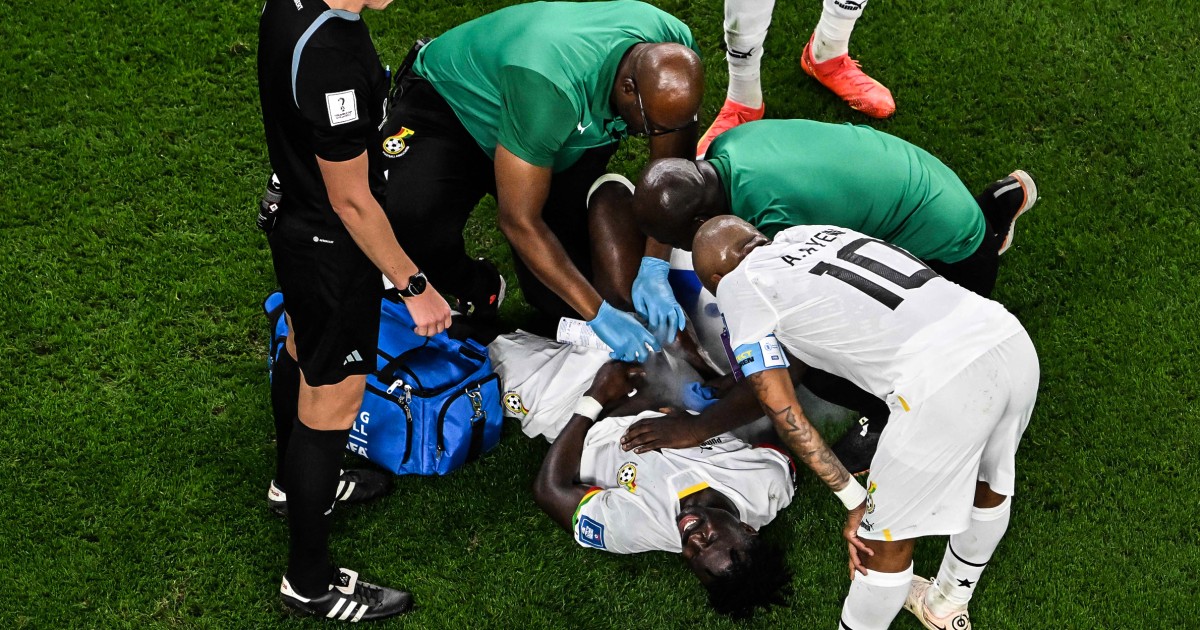Viewers of the World Cup are likely familiar with the “magic spray” that sometimes gets whipped out after a player tumbles to the ground, writhing in pain from a mid-game injury.
The aerosolized substance garners renewed intrigue every so often, when team doctors douse players with it and then send them back into action, seemingly healed. So, how does the spray work, and just how magical is it?
The sprays commonly used in these settings don’t actually do any healing, according to experts. Rather, they offer temporary chilling and numbing to dull pain.
What’s in the bottle varies from brand to brand, but the sprays usually contain ethyl chloride, a prescription medication used as a topical antiseptic and cooling substance, or methyl salicylate, a counter-irritant that can cause a cold-and-hot feeling and is commonly found in over-the-counter rubs like Bengay.
“It’s providing a little bit of temporary anesthetic or numbing or freezing of the skin,” said Dr. Shane Davis, a physiatrist specializing in nonoperative sports medicine at Tufts Medical Center. “It’s a lot like if you put an ice pack on — you lose sensation of that area, it calms down the pain.”
The relief lasts just a few seconds to a couple of minutes, Davis said, but it’s enough to get a player over that initial pain. Other pain relief interventions like ice packs require more time to take effect, but in a game, players often can’t afford to spend 10 or 15 minutes on the sidelines.
For some players, the spray may also have a placebo effect. And by the time it wears off, the adrenaline of being back in the game might further mask some of the discomfort.
It’s common for soccer players to take impacts in bony areas, which can cause pain but don’t often lead to lasting injuries. But if a player suffers a fracture or tear, cold spray might do more harm than good.
“If there is concern for structural damage or concern that the athlete could make things worse, that’s where the decision would be to pull that athlete out,” said Mitch Therriault, a physical therapist in sports medicine at Ohio State Wexner Medical Center. “But if it’s something that’s more minor or more of a short-term pain … that’s where this [spray] comes into play.”
Experts also said the sprays are not for use on open wounds.

“Magic spray” is more commonly used in soccer than other contact sports, but not all teams rely on it. The U.S. Soccer Federation, the organization that governs the Men’s and Women’s National Teams, does not use magic spray, a spokesperson told NBC News.
“Some guys actually don’t need it and don’t ever ask for the cold spray, but some guys have gotten accustomed to using it and know it helps them,” said Sam Cervantes, the athletic trainer for men’s soccer at the University of Pittsburgh. “It’s not something that I’m going to jump to, but if somebody asked for it, I’ll certainly provide it for them.”
Outside the sports world, physicians sometimes use sprays like ethyl chloride to numb an injection site before inserting a needle.
The general public can find versions of these sprays at drug stores or online, sold as “Cold Spray” or “Pain Relief Spray” by brands like Cramer or MyDerm.
Cervantes said cold sprays can pose risks when applied by untrained users, though: Their freezing properties can damage the skin when applied for too long, and the products should not be used on people with conditions that make them vulnerable to cold or that impair their skin sensation.
He added that he doesn’t think the pain relief the spray offers World Cup players is very different than the experience anyone has after rubbing their shin for a few moments following a collision with a table or dresser.
“That’s kind of the funny thing about it,” Cervantes said. “There’s really no magic to the spray.”
Share your story or advertise with us: Whatsapp: +2347068606071 Email: info@newspotng.com















